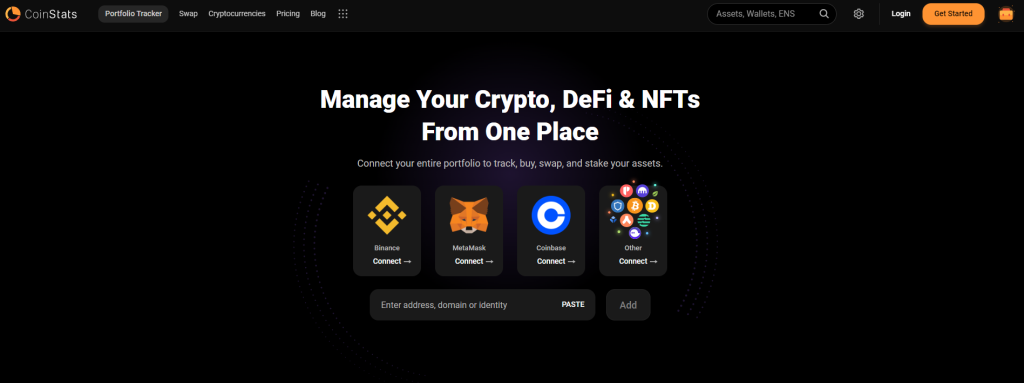
Successfully dealing with the complex crypto markets requires a solid grasp of portfolio analysis, especially if you’re actively managing it.
Cryptocurrency portfolio analysis is a crucial tool for investors, offering many advantages for monitoring and assessing crypto investments. By understanding and utilizing the key metrics and analysis techniques, you can make informed decisions to optimize your cryptocurrency portfolio.
This article will give an overview of the important metrics for analyzing cryptocurrency portfolios, along with practical guidance on their application.
What you'll learn 👉
Key Metrics for Cryptocurrency Portfolio Analysis
To evaluate a cryptocurrency portfolio accurately, investors should take into account the following metrics:
- Return on Investment (ROI)
- Volatility
- Sharpe Ratio
- Drawdown
- Correlation
Portfolio Volatility
Portfolio volatility measures how much the prices of your investments change over time. It can be influenced by factors like changes in the crypto market, the performance of all the coins in the portfolio, and geopolitical events—a portfolio with high volatility experiences larger price swings, which could result in substantial gains or losses.
By understanding the volatility of your portfolio, you can enhance your ability to handle risks and potential rewards associated with your investments. Depending on your age, time frame, and goals, you may want to take on more or less risk and diversify your investments across a range of digital assets in your crypto portfolio.
Return on Investment (ROI)
ROI measures your portfolio performance by comparing the initial amount invested across all assets to its current value. A high ROI signals good performance for your portfolio, while a lower ROI indicates a potential loss.
By monitoring the return on investment (ROI) of individual cryptocurrencies within the portfolio, investors can assess the performance of each investment and make informed decisions about buying, selling, or holding.
Sharpe Ratio
The Sharpe Ratio is a widely used metric in portfolio analysis and can be a valuable tool for investors in evaluating the risk-adjusted returns of their portfolio. It was developed by Nobel laureate William F. Sharpe and is calculated by subtracting the risk-free rate of return from the expected return of the investment and then dividing the result by the standard deviation of the investment’s returns.
The Sharpe Ratio helps you assess how efficiently your entire portfolio balances risk and return. A higher Sharpe Ratio indicates that your portfolio generates better returns compared to the risk it carries, reflecting a well-optimized investment approach.
Maximum Drawdown
The Drawdown is calculated by subtracting the lowest value of an investment from its peak value and then dividing the result by the peak value. Crypto investors use the Maximum Drawdown as a key performance indicator of the potential losses an investment may experience. A higher maximum drawdown means the investment has a greater potential for loss, while a lower maximum drawdown means it is relatively less risky.
Portfolio Correlation
Portfolio correlation measures how different assets in a portfolio relate to each other in terms of their returns. A correlation coefficient is used to measure the strength and direction of the relationship between two assets, with values ranging from -1 to +1.
A correlation coefficient of +1 indicates a perfect positive correlation, meaning that the returns of the two assets move in the same direction and magnitude. A correlation coefficient of -1 indicates a perfect negative correlation, meaning that the returns of the two assets move in opposite directions and magnitude. A correlation coefficient of 0 indicates no correlation, meaning that the returns of the two assets are unrelated to each other.
Passive investors prefer larger, more established cryptocurrencies like Bitcoin because they are typically less risky. However, investors willing to take on more risk and volatility may opt to include smaller market cap crypto assets in their portfolio. These coins can potentially provide higher returns during bull markets when the crypto market is generally more favorable towards riskier assets.
Read also:
- Best DeFi Trading Platforms: What Are the Top DeFi platforms?
- Best Crypto Arbitrage Scanners – Free & Paid Arbitrage Scanners Online
- How to Use ChatGPT to Trade Crypto: A Guide to Profitable Trading
- Best Defi Portfolio Trackers For ETH, BSC, Polygon
How to Analyze a Crypto Portfolio
1. Choose a Portfolio Tracker
Explore various cryptocurrency tracking tools to find the one that fits your requirements. A crypto portfolio tracker such as the CoinStats Crypto Portfolio Tracker will help you keep track of your crypto portfolio and the entire crypto market.

It provides a seamless solution for managing all crypto, DeFi, CeFi, and NFT assets on a single platform. You can connect your portfolios to CoinStats to track all your cryptocurrencies and set price alerts for specific coins and NFTs.
Read here our full CoinStats App Review.
CoinStats provides unparalleled convenience and speed in tracking, swapping, buying, sending, receiving, and earning on crypto.
2. Apply Metrics and Tools
You can use coin market dominance to assess the relative strength of different cryptocurrencies within the market. Historical price data is another useful tool for visualizing the performance of individual cryptocurrencies over time, enabling you to spot trends and patterns that can guide your investment choices.
Technical analysis tools, such as moving averages, Bollinger Bands, or the Puell Multiple crypto indicator, can also be used to analyze cryptocurrency markets and identify price trends and potential entry and exit points for your investments.
Fundamental analysis involves evaluating the core factors that can influence a cryptocurrency’s value, like its technology, development team, and market adoption.
This can help you make informed investment decisions based on the long-term potential of a particular cryptocurrency.
3. Make Informed Decisions
Once you’ve analyzed your portfolio, you can make informed decisions about your investments. This might include rebalancing your portfolio, adjusting your investment strategy, or establishing new investment objectives. By adopting a strategic approach and making decisions based on your analysis, you enhance your prospects of reaching your investment objectives in the cryptocurrency market.
Conclusion
Keep in mind that the cryptocurrency constantly evolves, and staying updated with the most recent tools and analysis techniques is essential for success. As you gain experience and refine your portfolio management skills, you’ll be better equipped to navigate the volatile crypto world and make the most of your investments.






